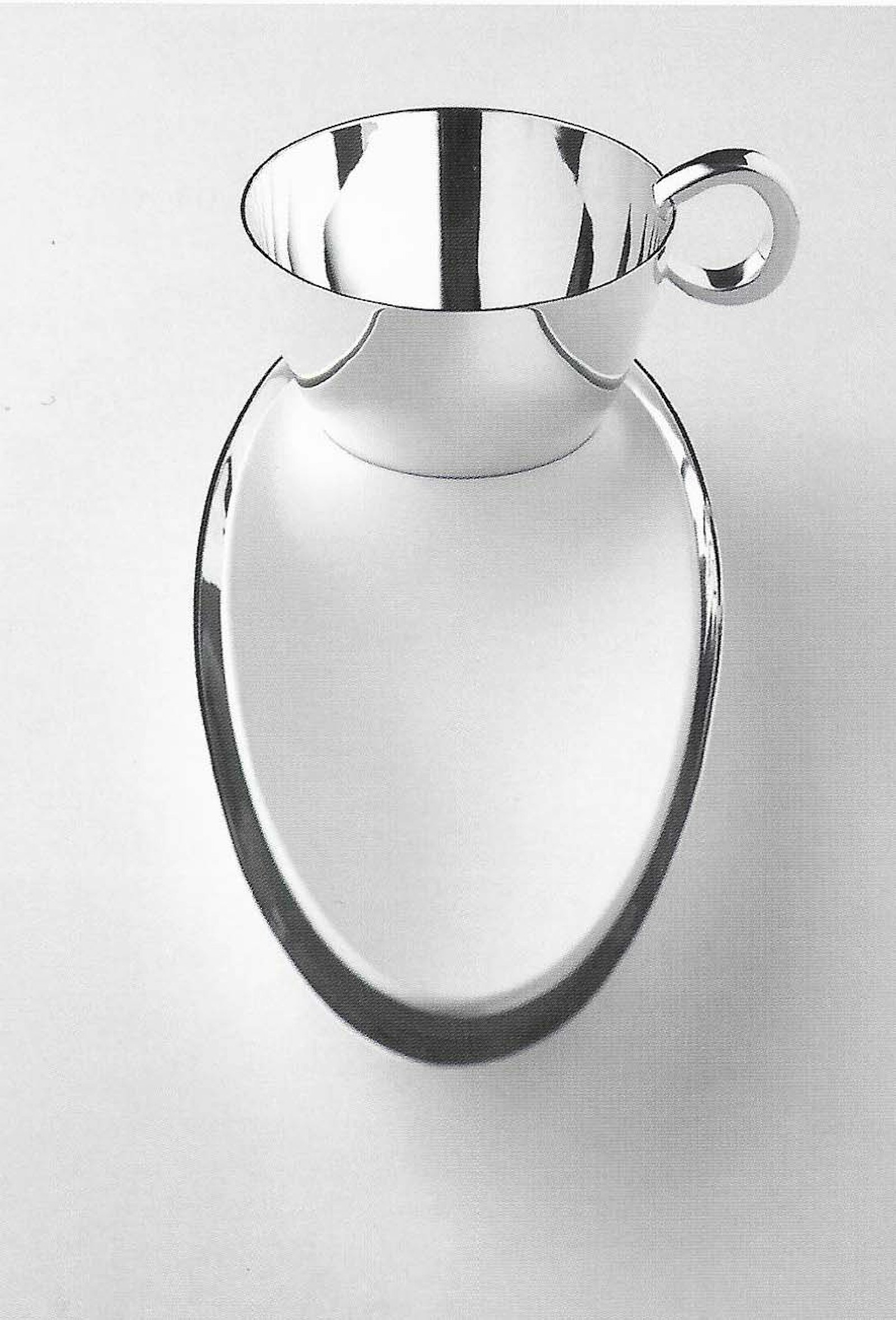de Velde
Piu
After completing her degree at the Royal Academy of Fine Arts in Antwerp, Nedda El-Asmar went to the Royal College of Art in London.
She worked on a project there in cooperation with the London Business School. It was for the Comite Colbert, turning a typically English product into an international luxury good at the request of Orfèvrerie Christofle.
Through her experience and contacts acquired during this assignment, Nedda came into contact with the French house Hermes and its subsidiary Puiforcat. Christofle also gave her further assignments. DUNI, formerly De Ster (De Ster now stands for a brand within the group). also asked her to design for them. They specialise in meal solutions for the airline sector. Her first design was the Capriccio coffee service, which despite the fact that it won the Prijs Knokke-Heist Jong Design with its theme of "Minimal", did not end up being produced.
Alongside De Ster, which takes care of meal solutions for economy class, from reusable to disposable materials, we also find within the umbrella of the DUNI group the collection Virtuoso. This collection is designed for passengers in business and first class. They do not use disposable materials, but rather real cutlery and porcelain dishes. There are few sectors that are as governed by rules as products for inflight catering. Everything has to fit standard measurements on board for ovens and trolleys. How many dishes in a set? How should they be stacked? How tall should the glasses be? Can it all fit on one tray? Nedda sought help and tips on all this from Erik lndekeu, who guided her project within the design department of DUNI.
And despite all the restrictions, Nedda managed to create an exceptionally aesthetic product with Piu. A product that fits in with the philosophy of Virtuoso. Travellers must feel pampered and spoiled. Meals are not necessarily served on board: they can also be served in a lounge in the airport. That usefully occupies waiting time for boarding and allows the passenger time for undisturbed sleep aboard the aircraft. When passengers are served on board, they are no longer handed a pre-prepared tray; the idea is for them to feel as though they are really being "waited on", just like in a restaurant.
Working for a big company like DUNI offers technical possibilities during the development phase that an individual designer could never dream of in light of the cost price. Nedda put her Piu design on paper and made volume prototypes in polystyrene. Next, a series of 30 images were drawn on this basis. The prototype was made in silver and lacquered resin. For rapid prototyping, stereolithography was used, using laser beams to harden the resin, layer by layer. Once in production, the materials were replaced by steel and porcelain.
The Piu collection has since been presented to various airline companies around the world. (Although there is no doubt that this collection would certainly also look good in a gourmet restaurant or at home). Piu is so striking with its clean lines and its class that people do not realise that this design resulted from a strictly regulated assignment. "It is in self-limitation that a master first shows himself."

![Più, for Duni, prototype service for Business Class [2004]; silver [925] and a lacquered resin, hand-forged and rapid prototyping. version in production: steel and porcelain](https://www.datocms-assets.com/53750/1631526060-2004el-asmar-piu2.jpg?w=1600&fm=jpg)
![Più, for Duni, prototype service for Business Class [2004]; silver [925] and a lacquered resin, hand-forged and rapid prototyping. version in production: steel and porcelain](https://www.datocms-assets.com/53750/1631526056-2004el-asmar-piu3.jpg?w=1600&fm=jpg)
